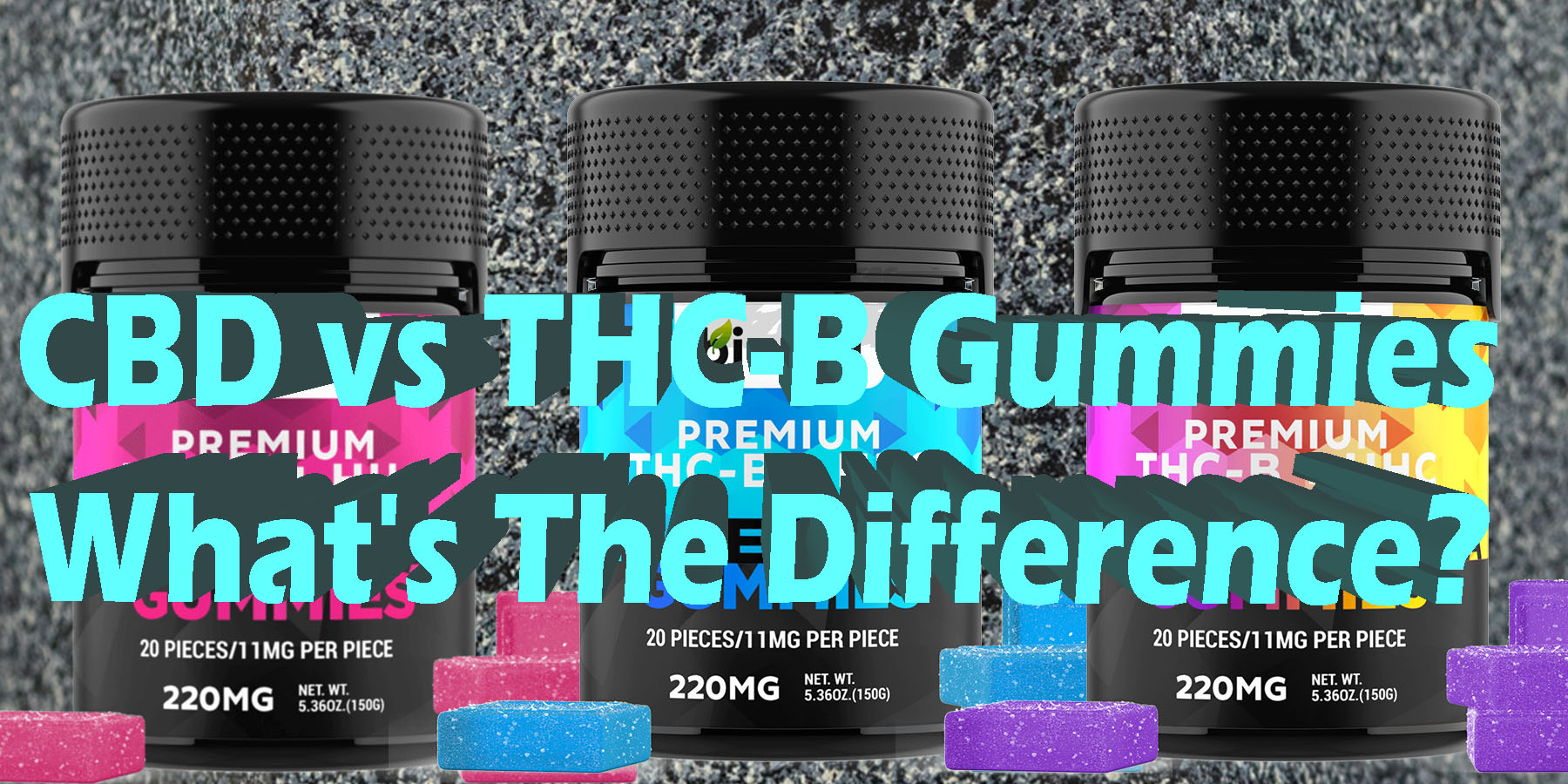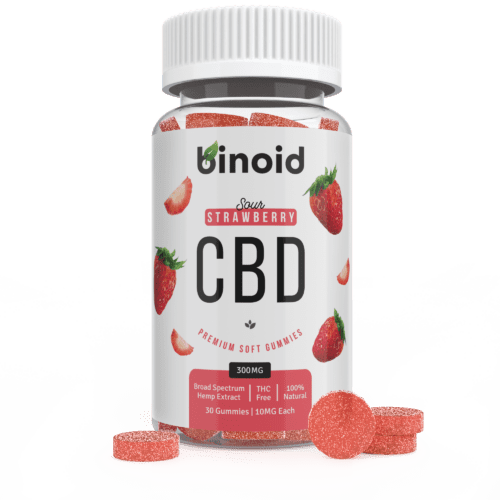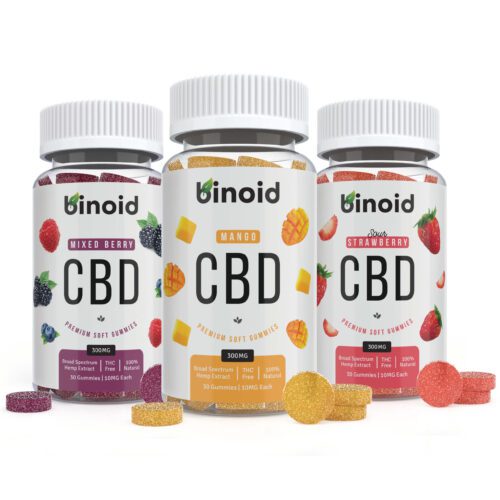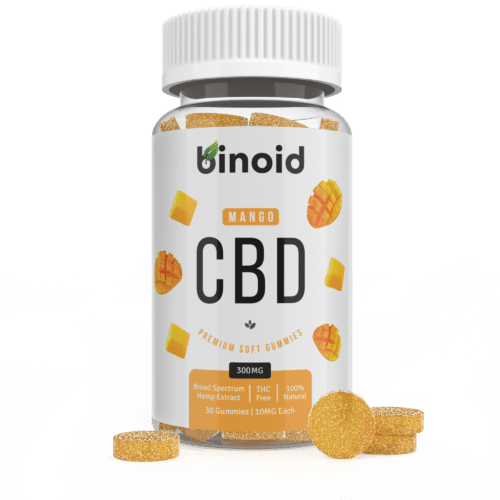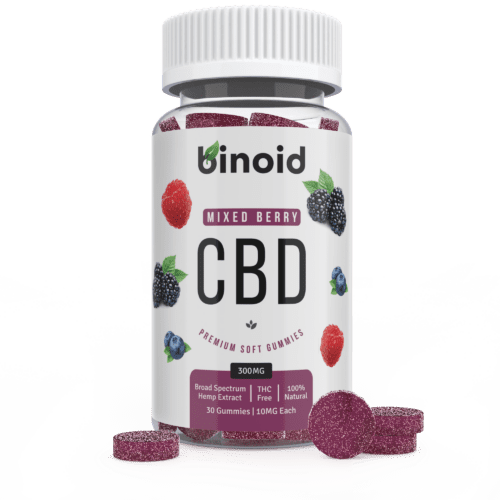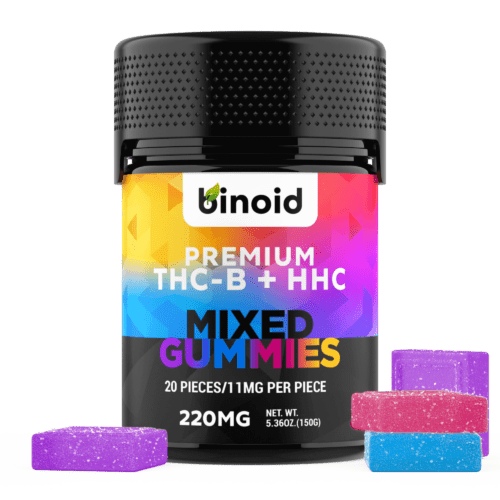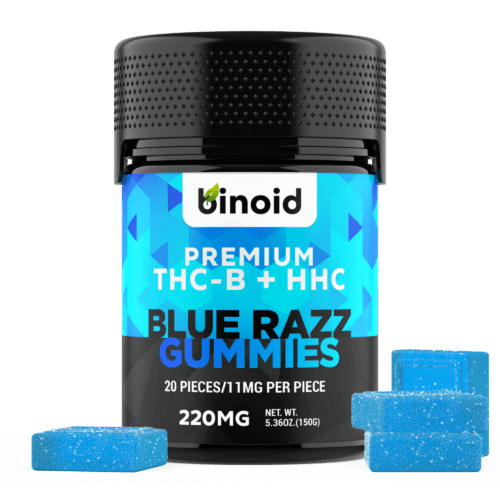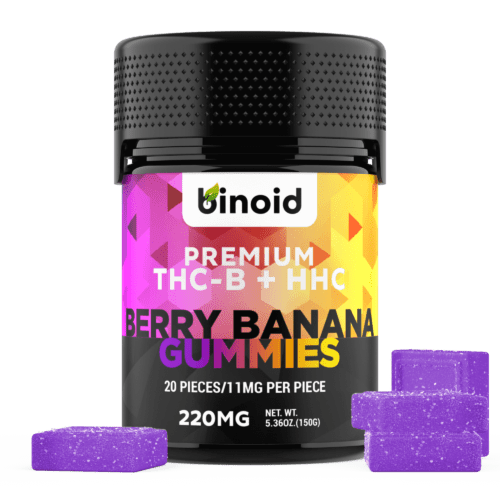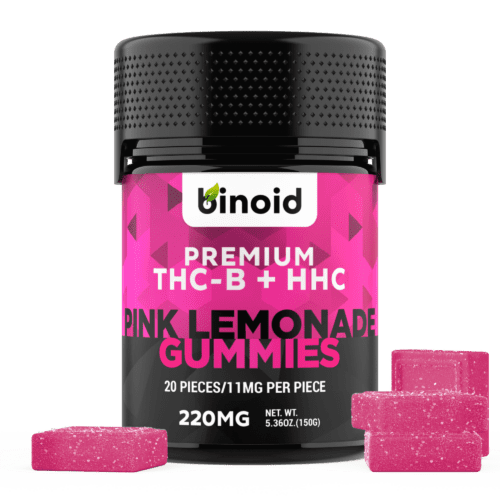Imagine the vast and diverse world of cannabinoids as a master artist’s palette, brimming with a spectrum of colors, each capable of creating a unique mood and transforming a blank canvas. On one side of this palette, you have the foundational, earthy tones—the pigments used to create balance, harmony, and a serene background that grounds the entire piece. On the other side, you find the vibrant, electrifying, and luminous colors, those used to create a powerful, reality-bending focal point that captures the eye and alters the viewer’s entire perception of the work.
This fundamental choice between grounding harmony and vibrant transformation is at the heart of the modern cannabinoid experience. It perfectly sets the stage for today’s exploration of two profoundly different colors on this palette: the calming, foundational shades of CBD gummies taking on the potent, electrifying hues of THC-B gummies.
To Buy Cannabinoid Gummies Click Here
Recommended products
What are Cannabinoids?
To truly appreciate the nuances of modern hemp-derived products and to navigate this exciting marketplace with confidence and informed understanding, one must first journey to the molecular heart of the hemp plant and truly grasp the marvels known as cannabinoids. These are naturally occurring chemical compounds that serve as the primary drivers behind the vast and diverse range of effects that the cannabis plant family, including its non-intoxicating cousin, hemp, can produce. One can conceptualize them as the plant’s own intricate biochemical language, a sophisticated set of chemical messengers that possess the remarkable ability to communicate with the human body in a profoundly specific and interactive way.
To date, scientists have successfully identified over one hundred distinct cannabinoids, each boasting its own unique chemical structure and, as a direct result, its own signature properties and potential effects on human physiology and consciousness. The most famous of these are undoubtedly Tetrahydrocannabinol (THC), celebrated for its euphoric properties, and Cannabidiol (CBD), known for its non-intoxicating, balancing qualities. However, these two are merely the most visible stars in a massive and brilliant constellation of compounds that includes a host of other intriguing players like Cannabigerol (CBG), Cannabinol (CBN), and various structural homologs of THC, such as the two potent contenders in our matchup today.
The extraordinary mechanism through which cannabinoids interact with us lies within a sophisticated and vital biological network called the endocannabinoid system (ECS). This intricately complex system, which extensive research has confirmed is present in all vertebrates, acts as a master regulator within the body. It is a pervasive and fundamental web of receptors, metabolic enzymes, and internally produced cannabinoids (known as endocannabinoids, such as anandamide, often playfully dubbed the “bliss molecule,” and 2-arachidonoylglycerol or 2-AG) that works tirelessly around the clock to maintain a state of internal equilibrium, a biological concept known as homeostasis. The ECS plays a crucial role in modulating an incredibly wide array of our most important bodily functions, from mood and memory to appetite, sleep-wake cycles, sensory processing, and even aspects of immune function.
The primary communication ports of this vast system are its receptors, most notably Cannabinoid Receptor 1 (CB1) and Cannabinoid Receptor 2 (CB2). CB1 receptors are found in their highest concentrations throughout the brain and central nervous system, while CB2 receptors are more densely populated in the peripheral regions of the body, particularly within the cells and tissues of the immune system. Phytocannabinoids—the cannabinoids derived from plants like hemp—bear a striking structural resemblance to our body’s own endocannabinoids. This similarity allows them to bind to, influence, or otherwise interact with these CB1 and CB2 receptors, much like a specific key is designed to fit into and operate a designated lock, thereby initiating a cascade of effects.
This intricate interaction between a phytocannabinoid molecule and an ECS receptor is precisely what triggers the spectrum of physiological and psychological effects associated with cannabinoid consumption. It is here that the fundamental difference between CBD and THC-B becomes crystal clear. When a cannabinoid with a very strong affinity for the CB1 receptor, such as THC-B, directly attaches to and activates these receptors in the brain, it can modulate the release of various neurotransmitters like dopamine and serotonin, leading to the intensely euphoric, blissful, and perception-altering experiences that users often seek.
In stark contrast, CBD has a very low and almost negligible binding affinity for the CB1 receptor and does not directly activate it, which is the scientific reason it is completely non-psychoactive and does not produce a “high.” Instead of creating an intoxicating effect, CBD is believed to work through a more indirect and complex series of mechanisms, supporting the ECS without direct activation. This essential distinction—direct, potent psychoactive activation versus indirect, non-psychoactive support—is the core of our matchup.
Recommended products
What are Cannabinoid-Infused Gummies and How are They Typically Made?
Cannabinoid-infused gummies represent a significant and remarkably user-friendly evolution in the methods by which people choose to consume and experience the vast array of compounds derived from the versatile hemp plant. They are, at their essence, delicious edible candies that have been skillfully and precisely infused with a verified dose of a specific cannabinoid extract. These products typically begin with a base that is familiar to any candy enthusiast—often utilizing gelatin to achieve that classic, satisfyingly chewy texture, or fruit pectin as a high-quality, vegan-friendly alternative—and are then elevated with a wide spectrum of natural and artificial flavors, vibrant colors, and various sweeteners. The meteoric rise in the popularity of this particular format can be attributed to a powerful and synergistic combination of factors that cater directly to the preferences and lifestyle of the modern consumer.
Gummies offer a level of discretion that is unparalleled by other consumption methods; being visually and aromatically indistinguishable from any other candy, they allow for consumption without drawing unwanted attention. Furthermore, and perhaps most importantly for a consistent experience, they provide exceptional and reliable dosing accuracy. Each gummy is manufactured through a meticulous and controlled process to contain a specific milligram amount of cannabinoids. This gives users absolute and unambiguous control over their experience, which is crucial for both novices and experts. This trifecta of convenience, appealing flavor profiles, and dosing precision has made gummies an incredibly approachable and enjoyable entry point for beginners, as well as a reliable and consistent staple for even the most seasoned cannabinoid connoisseurs.
The creation of a high-quality, safe, and effective cannabinoid gummy is a complex, multi-stage industrial process that represents a perfect marriage of culinary artistry and exacting chemical science. It is an intricate journey that demands meticulous attention to detail and the implementation of stringent quality control protocols at every single step to ensure that the final product is not only potent and enjoyable but also certifiably pure, safe, and flawlessly consistent from one gummy to the next, and from one batch to the next. From the careful selection of hemp genetics and the cultivation of the source plant to the final, child-resistant, and hermetically sealed packaging, reputable manufacturers adhere to a strict and transparent production protocol that leaves absolutely nothing to chance.
This fascinating journey from a humble hemp plant to a perfectly crafted, potent gummy is a powerful testament to the incredible advancements in modern agricultural science and extraction technology. Here is a comprehensive, deeply detailed step-by-step look at how these immensely popular edibles are typically brought to life:
Sourcing, Cultivation, and Harvesting of Superior-Grade Hemp: The entire production chain begins with the single most important foundational element: the hemp plant itself. Premium gummy manufacturers understand that a world-class final product can only be made from world-class raw materials. This process starts with the careful selection of superior hemp genetics, choosing specific cultivars that are known to be naturally rich in the desired cannabinoids (like CBD for direct extraction or for conversion into other molecules) and beneficial terpenes. These plants are then grown on licensed and regulated domestic farms, primarily in states like Colorado, Oregon, and Kentucky, which have well-established and sophisticated agricultural programs for hemp. The most reputable brands insist on sourcing hemp that is cultivated using certified organic and sustainable farming practices, which ensures the soil is free from contaminants and that no prohibited chemical pesticides, herbicides, or fungicides are used during the plant’s entire life cycle. Throughout the growing season, the plants are carefully monitored, and upon reaching their peak cannabinoid and terpene expression, they are harvested with care. The flower, or “biomass”—the part of the plant that is richest in these valuable compounds—is then meticulously dried and cured in climate-controlled environments to preserve its delicate chemical profile and prevent the growth of mold or mildew.
Application of State-of-the-Art Cannabinoid Extraction: With the premium, cured hemp flower ready for processing, the next critical stage is to efficiently extract the valuable cannabinoid compounds from the dense plant material. While several different methods exist, the undisputed gold standard in the high-end manufacturing industry is supercritical CO2 extraction. This highly sophisticated and capital-intensive process involves taking carbon dioxide (CO2) and subjecting it to extremely high pressure and very low temperatures. These specific conditions force the CO2 into a “supercritical” state, where it simultaneously exhibits the physical properties of both a liquid and a gas. This supercritical CO2 is then passed through a large chamber containing the ground-up hemp biomass. In this state, it acts as a powerful yet exceptionally clean solvent, efficiently dissolving the lipid-soluble cannabinoids, terpenes, and flavonoids from the plant material without damaging them through excessive heat or leaving behind toxic residues. Once the extraction cycle is complete, the pressure within the system is released, causing the CO2 to instantly revert to its normal gaseous state and evaporate completely and harmlessly, leaving behind a pure, potent, and entirely solvent-free crude cannabinoid oil. While less expensive methods like ethanol or hydrocarbon extraction are also used, they carry a much higher risk of leaving residual solvents if the oil is not properly and extensively purged afterward.
Intensive Purification via Winterization and Multi-Stage Distillation: The crude cannabinoid oil that is obtained from the initial extraction is incredibly potent but still contains a variety of undesirable components from the raw plant matter. These include things like fats, lipids, plant waxes, and chlorophyll, all of which can negatively impact the final product’s flavor, appearance, texture, and long-term stability. To create a cleaner, purer, and more palatable oil that is suitable for infusion into a gourmet edible product, this crude extract must undergo an intensive, multi-phase refinement process. The first step is typically winterization, a process in which the crude oil is mixed with food-grade ethanol and then frozen at sub-zero temperatures for a period of 24-48 hours. The extreme cold causes the unwanted fats, lipids, and waxes to congeal, solidify, and precipitate out of the solution, allowing them to be easily removed through a series of micro-filters. Following winterization, the now cleaner oil proceeds to the distillation stage. Using advanced short-path or wiped-film distillation equipment, the oil is gently heated under a deep vacuum. This precise control of heat and pressure allows individual compounds to be separated based on their unique boiling points and molecular weights. This highly precise step not only purges any remaining impurities but also allows manufacturers to isolate specific cannabinoids (creating a nearly 100% pure “isolate”) or to create a refined, high-potency oil with a broad spectrum of cannabinoids. The end result of this intensive purification is a beautiful, highly refined, transparent, and golden-hued oil known as distillate.
Chromatographic Separation and/or Molecular Synthesis: For products that require further refinement or creation of novel compounds, additional laboratory steps are necessary. For CBD products aiming to be THC-free (broad-spectrum or isolate), techniques like liquid chromatography are used. This process separates molecules based on their weight and polarity, allowing for the precise removal of THC. For a novel cannabinoid like THC-B, which exists in only trace amounts naturally, a complex synthetic process is required. This often involves using the abundant CBD molecule as a starting material and, through a multi-step chemical reaction, building the THC-B molecule with its characteristic four-carbon-atom tail. This is a highly specialized process that requires skilled chemists and advanced equipment to perform safely and purely. After synthesis, the resulting oil must undergo rigorous purification, often using chromatography, to remove any unreacted precursors, catalysts, or byproducts.
Gourmet Formulation and Culinary Preparation of the Gummy Base: Concurrent to the cannabinoid extract being perfected in the laboratory, a separate culinary team prepares the gummy candy base on an industrial scale. This is a large-scale cooking process that requires the precision and consistency of a scientific experiment. For a classic gummy with that familiar firm chew, the recipe typically includes high-quality gelatin, purified water, sweeteners like corn syrup and granulated sugar, and food-grade acids such as citric acid or malic acid for a touch of tartness and flavor enhancement. For the rapidly growing vegan market, animal-derived gelatin is swapped out for fruit pectin, a plant-based gelling agent that creates a slightly softer, cleaner bite. At this stage, premium, often all-natural, flavorings derived from real fruit purees and botanical extracts are carefully selected to create the desired taste profile. Natural colorings, sourced from ingredients like beet juice, spirulina, or turmeric, are also added to give the gummies their vibrant, appealing appearance. All of these ingredients are meticulously measured and combined in massive, steam-jacketed industrial kettles and cooked to an exact temperature and viscosity, known as the Brix, to achieve the perfect, consistent gummy base.
Homogenization and Precision Cannabinoid Infusion: This is arguably the most critical and technically challenging step in the entire manufacturing process for ensuring product consistency and consumer safety. The prepared cannabinoid extract—whether it be CBD, THC-B, or a complex blend of multiple cannabinoids—is meticulously measured to a precise potency that is calculated for the entire batch. This is especially critical for potent compounds like THC-B, where doses are measured in single milligrams and a tiny error can have huge consequences. This highly refined, thick oil is then introduced into the hot, liquid gummy mixture within the kettle and subjected to an intensive process of high-shear mixing and industrial-grade homogenization. This vigorous, powerful blending guarantees that the cannabinoid extract is perfectly and evenly distributed throughout every single drop of the gummy slurry, achieving a uniform molecular suspension. Without this essential step, the oil-based cannabinoids could pool together, resulting in “hot spots” where some gummies in the batch could have a dangerously high dose while others have virtually none.
Product Depositing, Molding, and Atmospheric Curing: Once the cannabinoid-infused gummy mixture is perfectly homogenized and has reached the ideal temperature for depositing, it is transferred from the cooking kettles to a specialized machine called a depositor. This machine operates with extreme precision, dispensing the exact same amount of the liquid gummy solution into vast trays of molds, ensuring each gummy is a uniform weight and size. These food-grade silicone or starch molds can be made in any number of conceivable shapes, from classic gummy bears and worms to sophisticated cubes, domes, rings, or custom brand-specific shapes. After being filled, the trays of molds are carefully transported into large, environmentally controlled curing rooms. Here, the gummies are left to set and cure, typically for a period of 24 to 72 hours, under tightly regulated conditions of temperature and humidity. This curing process is vital for several reasons: it allows the gelatin or pectin to fully set and cross-link, which develops the final desired texture and chewiness of the gummy, and it allows for a controlled amount of excess moisture to evaporate, which is absolutely crucial for ensuring the product’s long-term shelf stability and preventing microbial growth.
Final Finishing Touches and Optional Product Coating: After the gummies have fully cured and solidified, they are de-molded from their trays, often by mechanical means. At this point, they may go through a final finishing step to enhance their flavor, texture, and appearance, as well as their handling. This often involves placing the gummies into a large, rotating drum or “tumbler” where a specific coating is applied. For a classic sweet gummy, this might be a light coating of fine sugar crystals or a non-stick carnauba wax polish. For the ever-popular sour varieties, a specialized mixture of sugar and a souring agent like citric acid or malic acid is used to provide that signature tangy, mouth-puckering kick. This coating not only adds an extra dimension of flavor and sensory experience but also serves the very practical purpose of helping to prevent the individual gummies from sticking together in the final packaging.
Mandatory, Full-Panel Third-Party Laboratory Testing: Before a single gummy from a completed batch is ever packaged for sale, a reputable and transparent brand will send representative samples to an independent, ISO 17025-accredited, third-party laboratory for a comprehensive battery of analytical tests. This is the most crucial, non-negotiable step for guaranteeing consumer safety, product legitimacy, and brand integrity. The lab performs a series of tests to verify several key metrics. The cannabinoid potency test confirms the exact milligram amount of CBD, THC-B, and any other cannabinoids present in the product, ensuring the product is accurately labeled and legally compliant. The full panel safety analysis screens for a wide range of potential contaminants, including any residual solvents left over from extraction or synthesis, heavy metals (like lead, arsenic, and mercury) that may have been absorbed from the soil, dozens of specific pesticides, and microbial contaminants like mold, yeast, E. coli, and salmonella. The resulting multi-page report is called a Certificate of Analysis (COA), and it must be made easily accessible to all consumers.
Secure, Compliant, and Informative Packaging and Labeling: The final step in this intricate and carefully controlled process is to package the fully tested and approved gummies into their final retail containers. To protect the integrity, freshness, and potency of the product, the packaging must be both hermetically sealed and opaque to shield the gummies from degradation due to exposure to oxygen and UV light. In most jurisdictions, the packaging is also legally required to be certified as child-resistant. The product’s label must be clear, accurate, and fully compliant with all applicable state and federal regulations. A compliant label should clearly state the type and amount of active cannabinoid per gummy and per package, a full list of all ingredients and potential allergens, detailed nutritional information, suggested usage instructions and stern warnings, manufacturing and expiration dates, and, critically, a specific batch number and a scannable QR code that links directly to the third-party lab test results (the COA) for that exact batch, ensuring the ultimate level of consumer transparency and trust.
Recommended products
Breaking Down Today’s Cannabinoid Gummies Matchup: CBD Gummies vs. THC-B Gummies
With a firm and deeply detailed understanding of the core science that governs cannabinoids and the meticulous, multi-stage industrial process required to craft a premium infused gummy, we can now turn our undivided attention to the main event. This is a truly fundamental tale of two molecular opposites, a matchup that pits the celebrated champion of non-euphoric wellness against a powerful and potent psychoactive newcomer. In one corner of the ring, we have the globally recognized cornerstone of the hemp industry, CBD, a beloved compound praised for its remarkable ability to promote a sense of calm and balance without any intoxicating effects whatsoever.
In the opposing corner stands the potent and intriguing newcomer, THC-B, a compound that, despite its recent emergence, has already garnered a reputation for delivering a uniquely powerful and fast-acting euphoria that surpasses even that of traditional Delta 9 THC. Their compelling matchup is not about determining a simple winner, but about deeply understanding the profound and essential difference between choosing to support your equilibrium and choosing to explore the outer limits of euphoria.
Contender #1: CBD Gummies
CBD gummies have rapidly ascended to become one of the most recognizable and widely embraced forms of cannabinoid consumption in the global wellness landscape. Their pervasive popularity stems from a compelling combination of delightful flavor, supreme convenience, and, most importantly, their unique ability to foster a profound sense of calm and gentle balance without inducing any intoxicating effects. They represent a harmonious and approachable entry point into the expansive world of cannabinoids, appealing to a vast demographic that seeks subtle support for overall well-being and a touch of daily tranquility without altering their state of mind. CBD gummies are not about reaching for an altered perception; they are about embracing a more centered and composed version of your everyday self, offering a gentle yet powerful embrace of inner equilibrium.
At the heart of these wellness-focused gummies is Cannabidiol (CBD) – the second most abundant cannabinoid found in the cannabis plant and is particularly plentiful in legally cultivated hemp. The defining characteristic of CBD, and the primary reason for its immense popularity, is that it is completely non-psychoactive. This means it does not produce the euphoric “high” or any of the intoxicating effects associated with THC. The scientific reason for this lies in its interaction with the endocannabinoid system. Unlike THC, CBD has a very low and almost negligible binding affinity for the brain’s CB1 receptors.
Instead of directly activating them, CBD is thought to exert its influence through a more indirect and complex series of mechanisms. Researchers believe it may help support the ECS by inhibiting the FAAH enzyme, which is responsible for breaking down anandamide (our body’s natural “bliss molecule”), thereby increasing the levels of our own endocannabinoids. It is also believed to interact with other non-cannabinoid receptor systems in the body, such as serotonin and vanilloid receptors, which all play a role in regulating our sense of well-being.
The market for CBD gummies is incredibly vast and diverse, offering an unparalleled range of choices to consumers. This breadth of options reflects CBD’s versatility and its broad appeal across various demographics and for different personal preferences. From potency levels to ingredient formulations, the variety ensures that there’s a CBD gummy designed for almost every individual:
Shapes & Sizes: CBD gummies are available in virtually every conceivable shape and size, from classic gummy bears and fruit slices to sophisticated cubes, spheres, and custom branded molds. The size and shape are often designed to appeal aesthetically and sometimes to facilitate easy dosing. Potency levels are highly varied, catering to both novices and experienced users. Common doses range from a mild 5mg to 10mg per gummy, ideal for those just starting or seeking very subtle effects, up to more substantial doses of 25mg, 50mg, or even higher per gummy for those with greater needs or tolerances. The flexibility in dosing allows users to precisely tailor their intake for optimal results.
Flavors: The flavor spectrum of CBD gummies is as expansive as the candy aisle itself. Popular options include a kaleidoscope of fruit flavors like juicy Strawberry, tangy Blue Raspberry, sweet Mango, refreshing Watermelon, and zesty Citrus blends. Beyond these traditional favorites, many brands offer more gourmet or unique flavor combinations such as peach rings, sour worms, or even mint and coffee-infused varieties. Reputable manufacturers prioritize natural flavorings and colorings, often derived from real fruit juices and botanical extracts, ensuring a delicious taste experience that effectively masks any residual earthy notes from the hemp extract.
Potential Use of Live Resin or Live Rosin: For those seeking a more holistic and robust CBD experience, gummies infused with live resin or live rosin are a premium option. These full-spectrum extracts are produced from fresh, flash-frozen hemp plants, meticulously preserving the plant’s complete profile of cannabinoids, terpenes, and flavonoids that are typically lost during traditional drying and curing. When integrated into CBD gummies, this rich entourage of compounds can amplify the overall effects through the “entourage effect,” creating a more profound and nuanced sense of calm and balance that reflects the true essence of the whole plant.
Occasionally Strain-Infused: To further refine the subtle effects of CBD, some brands infuse their gummies with botanical terpene blends designed to mimic the profiles of specific cannabis strains. For example, a CBD gummy with a terpene profile reminiscent of an Indica strain (like Myrcene or Linalool) might aim to enhance feelings of deep relaxation and tranquility, making it ideal for evening use. Conversely, a Sativa-like terpene blend (rich in Limonene or Pinene) could promote a more uplifting and clear-headed experience, suitable for daytime use. These terpene infusions allow for a more personalized and directed sense of well-being.
Sometimes Combined with Functional Ingredients: This is a very common and popular innovation within the CBD gummy market. Manufacturers frequently blend CBD with other complementary, non-cannabinoid ingredients to create purpose-driven products. For example, CBD gummies marketed for promoting restful sleep often include Melatonin, a natural sleep-aid hormone, or calming botanicals like chamomile, valerian root, or L-Theanine. Other formulations might include vitamins (like B12 for energy or Vitamin C for immune support), adaptogens (like Ashwagandha or Reishi mushroom for overall balance), or even probiotics. These additions synergistically enhance CBD’s inherent properties to support specific aspects of well-being.
Sometimes Combined with Other Cannabinoids: CBD’s non-intoxicating nature and its balancing properties make it an ideal cannabinoid to blend with other compounds, both non-intoxicating and psychoactive, to create highly customized effects.
Other Non-Intoxicating Cannabinoids: It is very common to find CBD paired with other non-psychoactive cannabinoids such as CBN (Cannabinol), often used in sleep formulations due to its reputed sedative properties, or CBG (Cannabigerol), which is gaining recognition for its potential to promote a sense of overall calm and support a clear mind. These blends aim to enhance the gentle, balancing effects of CBD.
Mild Potency Cannabinoids: CBD is often combined with mild psychoactive cannabinoids like Delta 10 THC or THCV. Delta 10 can add a subtle uplifting and energetic quality, while THCV is known for its clear-headed and stimulating properties. These blends are designed for those seeking a very gentle lift with a strong foundation of balance from the CBD.
Moderate Potency Cannabinoids: This is an exceptionally popular category. CBD is frequently blended with Delta 8 THC, Delta 9 THC (in legally compliant amounts), or Delta 11 THC. The CBD acts as a powerful modulator, taking the euphoric effects of these moderate compounds and smoothing out the edges, potentially reducing the likelihood of overwhelming feelings while still allowing for a pleasant and noticeable sense of bliss and relaxation.
Strong Potency Cannabinoids: For experienced users seeking a potent, yet potentially more managed, euphoric experience, CBD is increasingly found in blends with stronger psychoactive cannabinoids like HHC, THC-P, THC-JD, THC-B, or THC-H. In these formulations, CBD does not eliminate the intoxicating effects of the stronger compounds but rather works to temper them, promoting a more grounded and comfortable experience, often described as a more “chilled out” or “relaxed” version of a high-potency effect.
The overall effects of a CBD gummy are universally described as subtle, gentle, and non-intoxicating. Users consistently report a pervasive sense of calm, mental clarity, and profound physical relaxation without any alteration of consciousness or a “high” feeling. Many describe it as a return to a more balanced and harmonious state, a feeling of being centered and composed amidst the daily hustle. When CBD is delivered as a full-spectrum product or combined with terpene-rich live resin, the “entourage effect” can enhance these subtle benefits, leading to a richer and more comprehensive sense of well-being.
Furthermore, when expertly blended with other non-intoxicating cannabinoids like CBN for nighttime use or CBG for daytime clarity, the specific desired outcomes can be gently amplified. Even when combined with psychoactive cannabinoids, CBD is often employed to modulate the intensity, providing a more grounded and comfortable experience of euphoria and deep relaxation.
Recommended products
Pros & Cons
CBD gummies are a cornerstone of the modern cannabinoid market, offering a unique set of advantages and a few considerations for consumers. A thorough understanding of these points is crucial for making an informed decision about integrating CBD into one’s daily routine.
Pros:
Non-Intoxicating Experience: The primary and most significant advantage of CBD is that it does not produce any psychoactive “high.” This makes it suitable for individuals who wish to experience the subtle benefits of cannabinoids without altering their state of mind, allowing for use at any time of day or night.
Promotes Gentle Calm and Relaxation: Users consistently report that CBD fosters a pervasive sense of calm, tranquility, and mental composure. It’s often chosen to support a serene mood and encourage profound physical relaxation, contributing to overall well-being.
Federally Legal and Widely Accessible: Derived from hemp with less than 0.3% Delta 9 THC, CBD is federally legal in the United States under the 2018 Farm Bill. This widespread legality means CBD gummies are easily available online and in retail stores across almost all states.
Excellent for Beginners and Sensitive Individuals: Due to its gentle, non-intoxicating nature, CBD is an ideal entry point for individuals new to cannabinoids or those who are sensitive to psychoactive compounds. It offers a safe and approachable way to explore the plant’s potential.
Versatile in Formulations (Full Spectrum, Broad Spectrum, Isolate): CBD is available in various forms: Full Spectrum (contains all cannabinoids and terpenes, including trace THC), Broad Spectrum (contains all cannabinoids and terpenes, but no THC), and Isolate (pure CBD). This versatility allows users to choose a product that best suits their preferences regarding the presence of THC.
Minimal Risk of Side Effects: CBD is generally well-tolerated, even at higher doses, with a very low incidence of adverse effects. Any reported side effects are usually mild and include slight drowsiness or minor digestive upset.
Compatible with Functional Ingredients and Other Cannabinoids: CBD’s balancing properties make it an ideal base for blends. It pairs exceptionally well with other non-intoxicating compounds for targeted support (e.g., CBN for sleep) and can gently temper the effects of psychoactive cannabinoids, leading to a more grounded experience.
Discreet and Convenient Consumption: CBD gummies offer all the inherent advantages of edibles—they are pre-dosed, portable, taste delicious, and can be consumed discreetly without any smoke or vapor, making them a user-friendly option for any setting.
Cons:
No Psychoactive Euphoria: For individuals seeking a noticeable “high,” CBD gummies on their own will not provide that experience. While they promote calm and well-being, they do not alter consciousness in a recreational way, which can be a drawback for some users.
Subtle Effects May Not Be Noticeable to Everyone: Because CBD’s effects are often subtle and gentle, some individuals, especially those accustomed to more pronounced psychoactive experiences, might find them less noticeable or impactful. Consistency in use is often key to appreciating its full spectrum of benefits.
Potential for Drug Test Failure (Full Spectrum): While CBD isolate and broad-spectrum products should contain no detectable THC, full-spectrum CBD products contain trace amounts of Delta 9 THC (below 0.3%). While unlikely to cause a positive result with casual use, consistent, high-dose consumption of full-spectrum CBD could theoretically lead to a positive drug test for THC.
Quality and Purity Concerns in an Unregulated Market: Despite its popularity, the CBD market is still largely unregulated by the FDA. This lack of oversight means product quality and accuracy can vary significantly between brands. Consumers must be diligent in selecting reputable brands that provide comprehensive third-party lab testing to ensure product purity and stated potency.
Contender #2: THC-B Gummies
Now, let us turn our attention to the other contender in this matchup, a potent and relatively new cannabinoid that occupies a fascinating space in the hierarchy of THC analogs. THC-B gummies are a significant step up in potency from Delta 8, and even from Delta 9, designed for those who are already well-acquainted with traditional THC and are seeking a more profound and robust euphoric experience. These products are for the intermediate to advanced user, offering an intensity that commands respect and a clear understanding of personal tolerance.
The emergence of THC-B is a direct result of the ongoing scientific exploration into the minor cannabinoids of the hemp plant, revealing molecules with unique properties that can provide distinctly different shades of relaxation and bliss. As such, THC-B gummies represent an exciting evolution in the market, providing a powerful new option for those looking to explore beyond the familiar and into the realm of truly potent effects.
The powerful molecule at the heart of these gummies is Tetrahydrocannabutol (THC-B) –a homolog of the famous Delta 9 THC, which means it shares the same basic structure but differs in the length of its alkyl side chain. While Delta 9 THC has a pentyl side chain (containing five carbon atoms), THC-B has a slightly shorter butyl side chain (containing four carbon atoms). Initially, one might assume that a shorter chain would lead to a weaker effect, but early research and anecdotal reports suggest the opposite. It is believed that the specific shape and structure of the butyl chain allows THC-B to bind to the CB1 receptors in the brain with greater affinity and efficiency than Delta 9 THC.
This stronger bond is the scientific basis for its reported higher potency. Like many other minor cannabinoids, THC-B occurs naturally in the cannabis plant in only trace amounts, making direct extraction unfeasible for commercial production. Therefore, the THC-B found in gummies is synthesized in a laboratory setting, typically using a hemp-derived CBD precursor, which is then chemically altered to create the THC-B molecule.
Recommended products
The market for THC-B gummies, while newer and less extensive than that for more established cannabinoids, is rapidly growing and innovating. These products are often positioned as premium offerings for experienced users, with a strong focus on delivering a potent and high-quality experience. The variety of options available reflects the unique characteristics of this powerful cannabinoid:
Shapes & Sizes: THC-B gummies are produced in all the standard shapes and sizes, from cubes and rings to custom brand shapes. However, a key difference lies in the dosage per unit. Because THC-B is significantly more potent than Delta 9, a single gummy will typically contain a lower milligram amount of the active cannabinoid, or it will be clearly scored to allow for easy division into smaller, more manageable doses. A typical starting dose for an experienced user new to THC-B might be just a few milligrams, so precision in dosing is a major focus for reputable brands.
Flavors: As with all premium edibles, flavor is a top priority. THC-B gummies come in a wide array of delicious fruit flavors, such as Strawberry, Blue Raspberry, and Tropical Punch. The goal of the culinary formulation is to create a delightful taste experience that makes the consumption process enjoyable. High-quality brands will use natural flavorings and colorings to ensure the product not only tastes good but also meets the standards of health-conscious consumers, avoiding artificial ingredients wherever possible.
Potential Use of Live Resin or Live Rosin: The combination of a potent cannabinoid like THC-B with a full-spectrum, terpene-rich extract like live resin or live rosin creates a powerful synergy. The terpenes and minor cannabinoids in the live extract can produce a robust “entourage effect,” which may significantly enhance and modulate the already strong effects of the THC-B. This results in a more complex, nuanced, and profoundly powerful experience that is often described as being more “full-bodied” and closer to the feeling of consuming the whole plant. These products are intended for connoisseurs seeking the ultimate in flavor and effect.
Occasionally Strain-Infused: To provide users with more control over the character of their experience, some THC-B gummies are infused with botanical terpene blends that mimic the profiles of well-known cannabis strains. By adding a Sativa-like terpene profile, a brand can aim to create a THC-B experience that is more uplifting, energetic, and cerebrally focused. Conversely, an Indica-leaning terpene blend would be used to promote a more sedative, deeply relaxing, and body-focused effect. These infusions help to “steer” the powerful effects of THC-B in a desired direction.
Sometimes Combined with Functional Ingredients: While less common than with milder cannabinoids like Delta 8, some brands may add functional ingredients to their THC-B gummies to create a more specialized product. For example, a “chill” or “relax” blend might include a small amount of L-Theanine or chamomile to complement the deeply relaxing physical effects of the THC-B. However, the dominant effects of the THC-B molecule are so pronounced that these additions are typically more for subtle nuance rather than a primary driver of the experience.
Sometimes Combined with Other Cannabinoids: THC-B is an excellent candidate for cannabinoid blending, where its potent effects can be either enhanced or balanced by other compounds. This is, in fact, the most common way to find THC-B on the market.
Non-Intoxicating Cannabinoids: To create a smoother and more balanced high, THC-B is often blended with non-psychoactive cannabinoids like CBD or CBG. CBD is well-known for its ability to temper the intense euphoria of stronger THC analogs, potentially reducing the likelihood of anxious or overwhelming feelings. CBG can contribute to a feeling of clear-headedness, which can be a desirable counterpoint to the powerful effects of THC-B.
Mild Potency Cannabinoids: It is less common to find THC-B blended with milder cannabinoids like Delta 10 or THCV, as their subtle effects would likely be completely overshadowed by the potency of the THC-B.
Moderate Potency Cannabinoids: This is a very popular strategy. Many of the most common products on the market are not pure “THC-B gummies” but rather “Delta 8 + THC-B gummies” or “Delta 9 + THC-B gummies.” In these formulations, a base of Delta 8 or Delta 9 provides the main body of the high, while a smaller amount of THC-B is added to significantly “boost” the overall potency and euphoria, creating a powerful and layered experience.
Strong Potency Cannabinoids: For the absolute upper echelon of potency, some manufacturers create “super blends” that combine THC-B with other powerhouse cannabinoids like THC-P, THC-JD, HHC, or THC-H. These products are designed for a very small niche of consumers with extremely high tolerances and are marketed as providing one of the most intense and profound experiences legally available from hemp.
The overall effects of a THC-B gummy are characterized by a potent and fast-acting euphoria. Users often report a powerful head and body sensation that is noticeably stronger and more immersive than what is experienced with traditional Delta 9 THC. The experience is often described as being intensely blissful, deeply relaxing, and providing a significant shift in sensory perception. While extremely potent, some anecdotal reports suggest that the duration of THC-B’s peak effects may be slightly shorter than that of other ultra-potent cannabinoids like THC-P, making it a powerful but potentially more manageable experience for seasoned users. When consumed as part of a blend, THC-B acts as a powerful amplifier, taking the familiar effects of other cannabinoids and elevating them to a new level of intensity and euphoric depth. This cannabinoid is a significant step up from the mainstream and should be approached with caution and respect for its formidable power.
Recommended products
Pros & Cons
Given its significant potency, it is crucial to approach THC-B with a clear and comprehensive understanding of its unique advantages and its potential drawbacks. This is not a cannabinoid for the inexperienced, and a balanced assessment is critical for any consumer considering this powerful product.
Pros:
Significantly Higher Potency than Delta 9 THC: For experienced users who are looking for an experience that goes beyond traditional THC, THC-B offers a reliable and significant increase in potency. Its strong binding affinity for the CB1 receptor translates to a more profound and intense euphoric and relaxing experience.
Powerful and Immersive Euphoria: The primary reported effect of THC-B is a strong and encompassing sense of euphoria and bliss. It is highly sought after by those who prioritize a powerful mood-lifting and deeply enjoyable psychoactive experience.
Excellent for High-Tolerance Users: Many long-term consumers of Delta 9 find that their tolerance builds over time, diminishing the effects. THC-B’s higher potency can effectively overcome this tolerance, providing a satisfying experience for those who have become desensitized to less potent cannabinoids.
Fast-Acting Effects (Anecdotal): Many users report that the onset of THC-B’s effects feels faster and more immediate compared to other edibles. This can be an advantage for those who prefer not to wait a long time for the experience to begin.
Highly Effective in Cannabinoid Blends: THC-B is an exceptional “booster” cannabinoid. Its ability to dramatically enhance the potency and character of another cannabinoid base has led to the creation of innovative, popular, and highly effective blended products.
Federally Compliant When Derived from Hemp: As a novel cannabinoid derived from legally compliant hemp containing less than 0.3% Delta 9 THC, THC-B falls under the protection of the 2018 Farm Bill, making it federally legal and accessible in many states where cannabis is not.
Requires Smaller Doses for Strong Effects: Due to its high potency, a smaller milligram amount of THC-B is needed to achieve a powerful effect. This can make it a very efficient cannabinoid, as a single gummy can be divided into multiple doses.
Represents Cutting-Edge Cannabinoid Innovation: The availability of novel cannabinoids like THC-B is a testament to the rapid innovation in the hemp industry. It offers adventurous consumers the opportunity to explore new facets of the plant’s potential and be on the forefront of cannabinoid science.
Cons:
High Potential for Overwhelming Effects: The primary advantage of THC-B—its potency—is also its most significant risk. For users with low to moderate tolerance, or even for experienced users who misjudge the dose, the effects can be unpleasantly intense and overwhelming, potentially leading to anxiety or discomfort. It is not suitable for beginners.
Profound Lack of Long-Term Scientific Research: THC-B is a very new discovery in the grand scheme of cannabinoid science. As such, there is a significant lack of long-term clinical research on its effects, its safety profile, its impact on health, and its full range of potential side effects. Users are treading on relatively new ground.
Complex and Shifting State-Level Legality: Like all other novel psychoactive cannabinoids derived from hemp, THC-B exists in a precarious legal gray area. While federally legal for now, many states are enacting “total THC” laws or explicitly banning specific isomers and homologs, which could make THC-B illegal in an increasing number of jurisdictions without warning.
Often Found Only in Blends: While its use in blends is a pro, it can also be a con for those who wish to experience the pure, unadulterated effects of the molecule. It can be difficult to find products containing only THC-B, making it challenging to isolate and understand its unique character without the influence of other cannabinoids.
Recommended products
Other Key Things You Should Know About When Choosing Either CBD Gummies or THC-B Gummies
Choosing between CBD gummies and THC-B gummies is a decision that represents a journey to opposite ends of the vast cannabinoid spectrum. This is not a choice between two similar options, but a fundamental decision based on your core intention: are you seeking to support your body’s natural state of balance, or are you looking to embark on a powerful psychoactive voyage? The chasm between these two experiences is immense, and ensuring a positive, safe, and fulfilling journey requires a commitment to due diligence, personal research, and brutally honest self-assessment. In this dynamic market, empowered decision-making is key. Whether you are drawn to the non-intoxicating, calming embrace of CBD or are cautiously contemplating the potent euphoria of THC-B, several essential factors remain universal and non-negotiable:
Fundamental Difference in Psychoactivity: This is the absolute cornerstone of your decision. CBD is fundamentally non-intoxicating. It will not make you feel “high,” alter your perception, or impair your cognitive functions. Its effects are subtle, promoting a sense of calm, relaxation, and balance. THC-B, on the other hand, is a potent psychoactive cannabinoid. It will produce an intensely euphoric, powerful high that significantly alters perception and cognitive function. Your primary goal—whether it’s gentle well-being without a high or a strong euphoric experience—should be the sole determinant of your choice.
Dosing Protocols and Personal Tolerance: The dosing protocols for these two compounds are worlds apart. For CBD, a starting dose can be anywhere from 10mg to 50mg, and users can safely experiment to find their optimal level of subtle benefit. For THC-B, dosing must be approached with extreme caution. A starting dose for even an experienced user should be very small, perhaps 1-2mg, or a small fraction of a single gummy. The mantra of “start low and go slow” must be strictly adhered to. After taking an initial dose of THC-B, you must wait at least two full hours to gauge its full effects before even considering taking more.
Onset and Duration of Effects: Both CBD and THC-B gummies, being edibles, share a delayed onset of effects, typically ranging from 30 minutes to 2 hours. However, the duration can vary. CBD effects tend to be prolonged but subtle, lasting several hours. For THC-B, the duration of the powerful effects can also be quite long, easily lasting for several hours. You must plan accordingly. Do not consume a THC-B gummy if you have any responsibilities whatsoever that require your full attention, such as driving or operating machinery.
Hemp Source and Third-Party Lab Testing (COAs): Regardless of your choice, the importance of sourcing and lab testing cannot be overstated. Always choose brands that are transparent about their hemp source (preferably U.S.-grown, organic-leaning) and provide easily accessible, batch-specific Certificate of Analysis (COA) from independent, ISO 17025-accredited third-party laboratories. These COAs verify the cannabinoid potency, ensuring the product contains what it claims, and confirm the absence of harmful contaminants like heavy metals, pesticides, residual solvents, and microbes. This is your non-negotiable safeguard for product safety and quality.
Understanding Product Types (Isolate, Broad Spectrum, Full Spectrum): For CBD, this distinction is crucial. CBD isolate contains only pure CBD. Broad-spectrum CBD contains multiple cannabinoids and terpenes but no detectable THC. Full-spectrum CBD contains a full range of cannabinoids and terpenes, including trace amounts of Delta 9 THC (below 0.3%). This “trace THC” can contribute to an “entourage effect” but is a consideration for drug testing. THC-B products will always contain THC-B and are often blended with other cannabinoids, so reading the label and COA is essential to know what you are consuming.
The Critical Issue of Drug Testing: If you are subject to drug tests for employment or any other reason, your choice is clear: opt for CBD isolate or strictly broad-spectrum CBD products that explicitly state “0.0% THC” on their lab reports. Even full-spectrum CBD, with its trace amounts of Delta 9 THC, carries a small but non-zero risk of causing a positive drug test with consistent, high-dose use. THC-B, being a potent THC homolog, will almost certainly metabolize into compounds detectable by standard drug tests, leading to a positive result. If drug testing is a concern, THC-B is unequivocally not an option.
Potential for Synergistic Blends: Both CBD and THC-B are frequently found in blends. CBD is often combined with other non-intoxicating cannabinoids (like CBN for sleep or CBG for clarity) or functional ingredients. THC-B is almost always blended with other cannabinoids, often including CBD itself, to help temper its intense effects. Be aware of what you are buying: are you getting a pure experience, or a curated blend? The other ingredients will significantly impact the final effect.
Flavor Profiles and Ingredient Quality: Since gummies are an enjoyable way to consume cannabinoids, the taste is important. Both CBD and THC-B gummies come in a vast array of flavors. Beyond taste, examine the ingredient list. Look for gummies made with natural flavorings, colors, and high-quality gelling agents (like pectin for vegan options). Avoid products with excessive artificial ingredients or high-fructose corn syrup if you prefer a cleaner product. A well-formulated gummy is a pleasure to consume.
Legal Status and Regulatory Environment in the United States: As of August 2025, CBD derived from hemp (containing less than 0.3% Delta 9 THC) is federally legal under the 2018 Farm Bill and widely accepted. THC-B also falls under this federal legality if hemp-derived, but its status is far more contentious. Many states have moved to ban or regulate “synthetically derived” or “intoxicating” cannabinoids from hemp, placing THC-B in a volatile and inconsistent legal gray area across the country. Always verify the current legal status of THC-B in your specific state or locality before purchasing.
Consultation and Personal Experience: While this blog provides extensive information, it is not a substitute for personalized guidance. If you have underlying health considerations or are taking medications, it is always wise to consult with a qualified healthcare professional before introducing any new cannabinoid product into your routine. Ultimately, personal experience is the best teacher. For CBD, this means finding the right daily dose for balance. For THC-B, this means starting with an infinitesimally small dose to understand its profound power before ever attempting a full dose.
Two Opposite Sides of the Potency Spectrum Choices That Each Bring Something Wonderful!
Ultimately, the dialogue between these two gummies CBD gummies and THC-B gummies transcends a simple comparison of chemical compounds; it becomes a profound conversation about personal intent. Choosing one is an act of embracing the now, a decision to engage with the world from a foundation of enhanced tranquility and grounded clarity. To choose the other is a deliberate step into the extraordinary, a commitment to an hours-long journey through the vibrant, uncharted territories of perception and profound euphoria.
The question, therefore, is not which gummy is superior, but which path of consciousness one truly wishes to walk. In this remarkable era of botanical discovery, the ultimate power lies not in the potency of the product, but in the wisdom of the user to choose their destination before ever taking the first step. This self-awareness is the true key to unlocking the vast and incredible potential held within the hemp plant.

